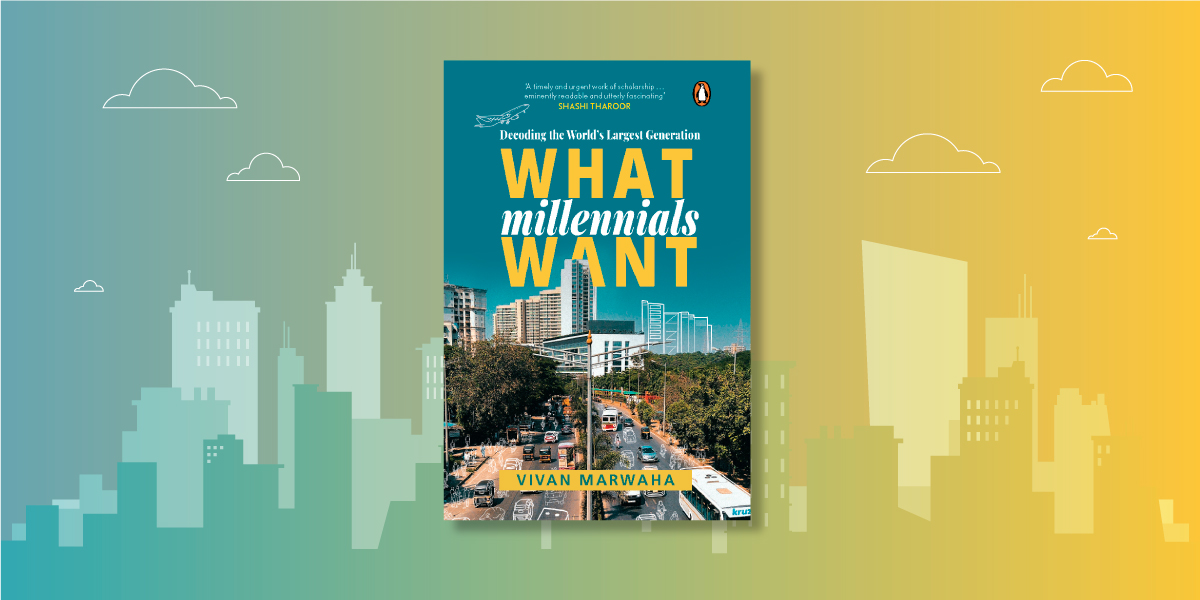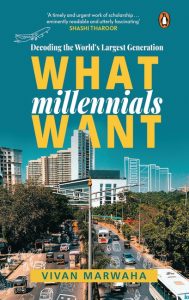
India is one of the youngest countries in the world and the generation of millennials make up for over 400 million people. This is the largest generation of people in the world.
That means that the choices and trajectory of this generation have pivotal consequences on local, regional, and global politics and economics. So the important question is: What do Indian millennials want? What are their economic aspirations and their social views? Most importantly, what makes them tick?
One thing that definitely gets in the way of millennials getting what they want, is the Indian education system. Read this exclusive excerpt from Vivan Marwaha’s What Millennials Want to find out how and why.
~

In 1961, the government of Prime Minister Jawaharlal Nehru established two Indian Institutes of Management (IIM), the first in Calcutta and the second in Ahmedabad. Calcutta was established in conjunction with the Massachusetts Institute of Technology’s Sloan School of Management, while the campus in Ahmedabad was to collaborate with the Harvard Business School.
The institutions, which have trained some of India’s and the world’s brightest business leaders, were the product of an inherently socialist idea. Almost ten years after independence from British colonial rule, there were simply not enough managers for India’s numerous public sector enterprises. These public undertakings, from mining corporations to ordnance factories, required well-trained executives to steer the young country’s industrial growth, and native talent was in short supply. The Planning Commission of India, the Soviet-inspired body which was tasked with developing five-year plans for the growth of the Indian economy, invited Professor George Robbins from the University of California, Los Angeles to fix this problem and help conceive an education institution to offer young Indians a practical business education.
Since then, investments were made in expanding university education, and the two institutions soon grew to twenty. The flagship institutions boast of a roster of hugely successful alumni, from RBI governor Raghuram Rajan and cricket commentator Harsha Bhogle to novelist Chetan Bhagat and former PepsiCo worldwide CEO Indira Nooyi, among numerous others in the Indian and global financial system. But they just weren’t enough. As Indians began to see these elite institutions as a ticket to a prosperous job at a multinational, and eventually, a career outside India, admission became extremely competitive. The private sector began to fill the gap between the demand and supply, and since then, thousands of private colleges opened across India to offer students a management education.
Most of India’s education system has a similar story. Today, the few good universities, colleges and schools, largely founded by the government or built during colonial rule, educate only a small number of individuals, while a vast private sector has mushroomed to fill the gaps in what the government failed to universalize.
What all of this has created is a deeply flawed system which tends to reward those with existing privileges or resources. Karthik Muralidharan, the Tata Chancellor’s Professor of economics at the University of California, San Diego, finds that the Indian education system is not built to educate students, but to filter them.1 In a 2005 paper, with co-authors Gretchen Cheney and Betsy Ruzzi, he argues that historically education in India served as a ‘gatekeeper, permitting an avenue of upward mobility only to those with resources’.2 Unfortunately, this remains true in 2021. Indian students spend years studying for board examinations, college entrance examinations, and public sector job tests to continuously filter them towards better opportunities. But in all the rote memorization and formulae required for success, the most significant purpose of learning— education, gets lost.
Although the privatization taking place in the sector was intended to make it more inclusive, it was, in fact, exclusionary and insufficient. Furthermore, India’s early prioritization of tertiary education came at the expense of primary-level schooling, creating vast inequities and poor standards of education that continue to this very day. These problems only exacerbated as India’s population continued to increase, as socialist India could not provide employment to the millions of young Indians who needed it. As the economy began to open up, the growth of Information Technology services in the country led to the creation of coaching industries dedicated to preparing students to either become software engineers or government servants. This is not because the education system had succeeded in preparing students for the future, but rather because it had failed.
In effect, India created an elaborate system which serves to filter its students towards IITs, IIMs and public service jobs instead of educating them to succeed in the modern economy Millennials have largely finished their education at the time of writing this book, and their time in school or college is not the first experience we may think about when understanding the generation. But if we’re looking at many of the challenges millennials face today, it’s because of the education system.









